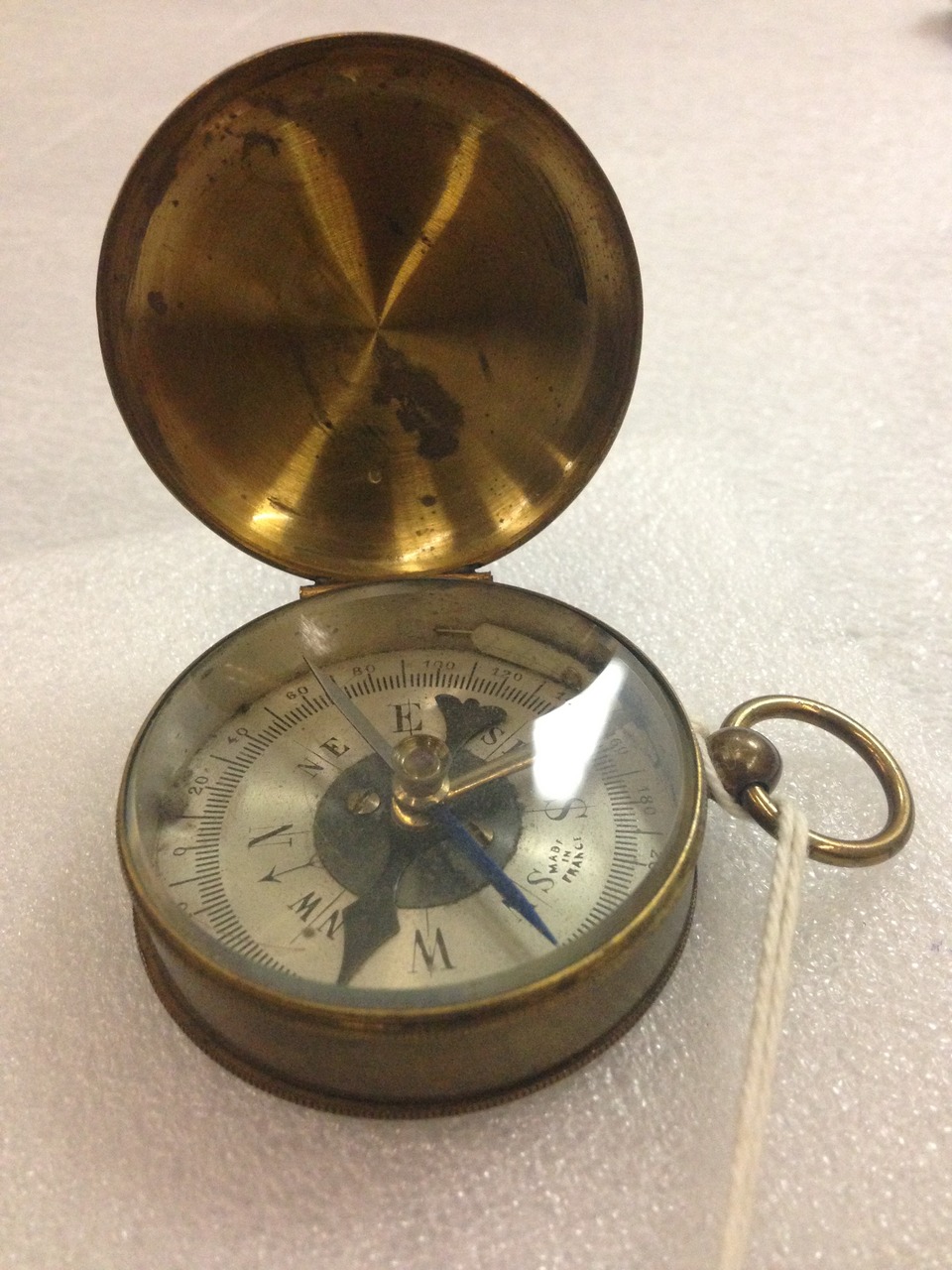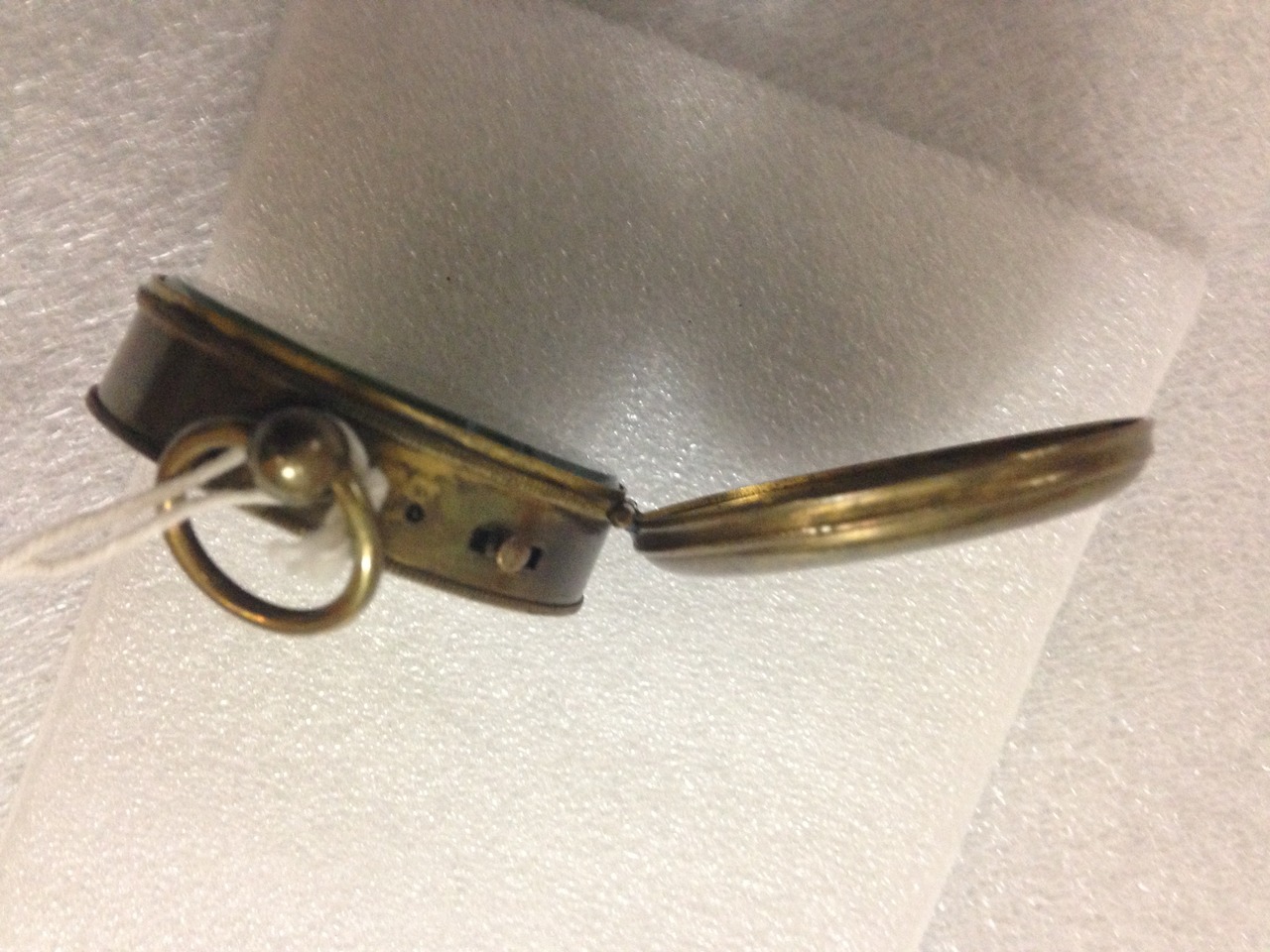Physical Components
This pocket compass is primarily made of brass. It's thick glass surface is protected by a hinged brass cover. In order to protect its glass surface, the compass is equipped with a brass cover on hinges. As the instrument was presumably meant for nomadic surveyors or travelers, the brass cover would have been important to protect the functions of the instrument whilst in movement.
During the 1800s, development of a large brass-related industry, producing clocks, buttons and lamps. Brass has unique properties: can be rolled thin, is corrosion resistant, non-magnetic, with low friction sheets and beautiful (resembles gold). These unique properties will soon result in it being used in the production of many technical instruments, such as clocks, watches, chronometers, compasses and other navigational tools. By the mid-19th century, other alloys will be used.
The compass is equipped with a ring which enables it to be attached to a chain to facilitate portability. One can damp the compass needle so that it comes to a complete stop. The process of damping involves the use of a needle lock lever (sometimes refer to as stopper), located on its side, in the form of small pin that is depressed to lift the compass needle off the pivot point. This is important as it ensures a reading accuracy. This pocket compass was presumably used in an environment that would have required for the surveyor or the person carrying the instrument to be moving around quite a bit. As such, it would be important for the compass to have a stopper in order to preserve the instrument's functions, in order to not damage the magnetic qualities of the compass.

